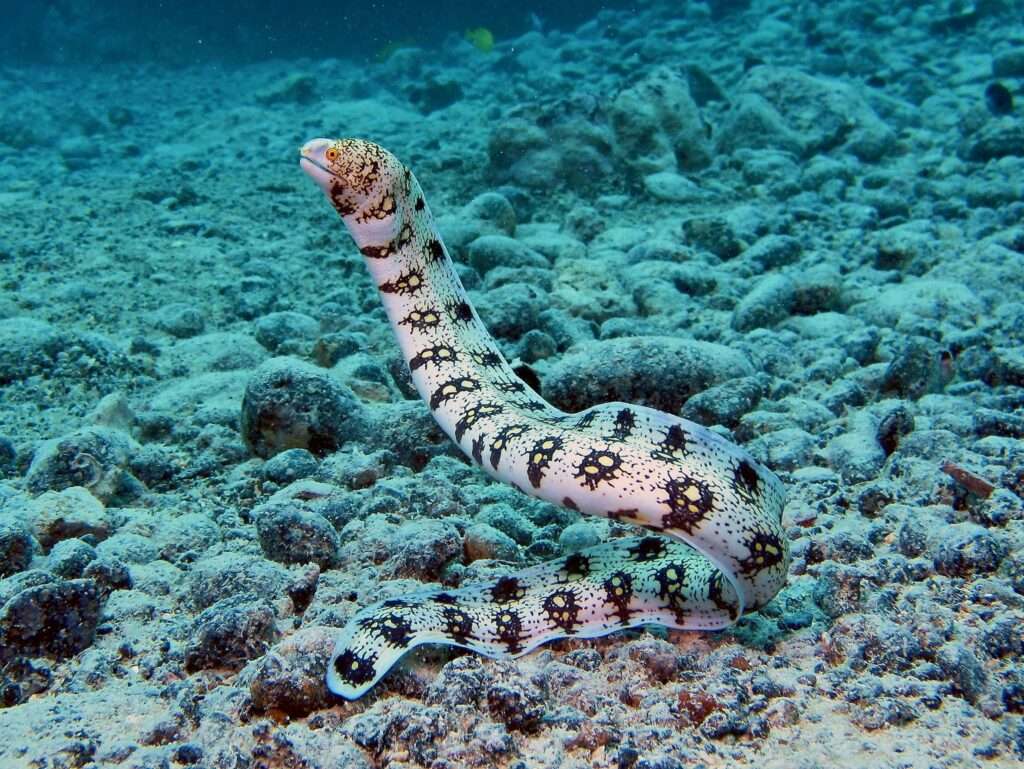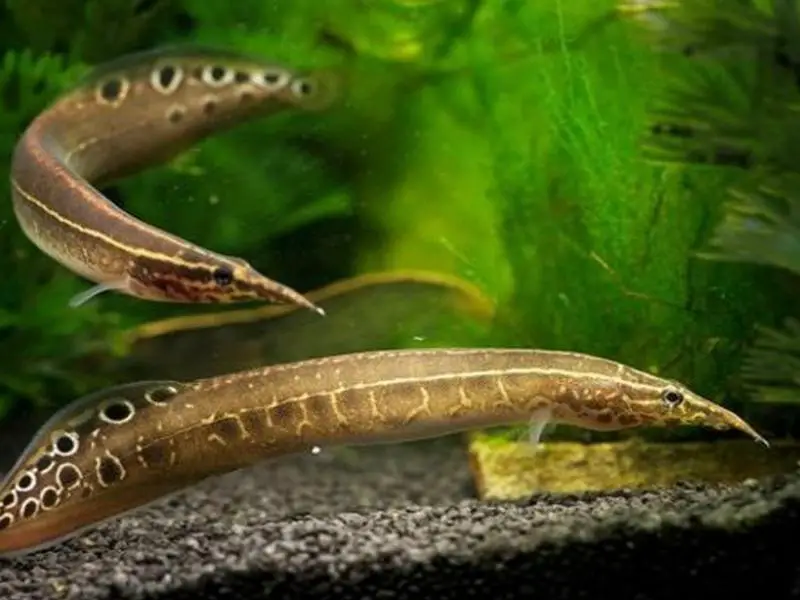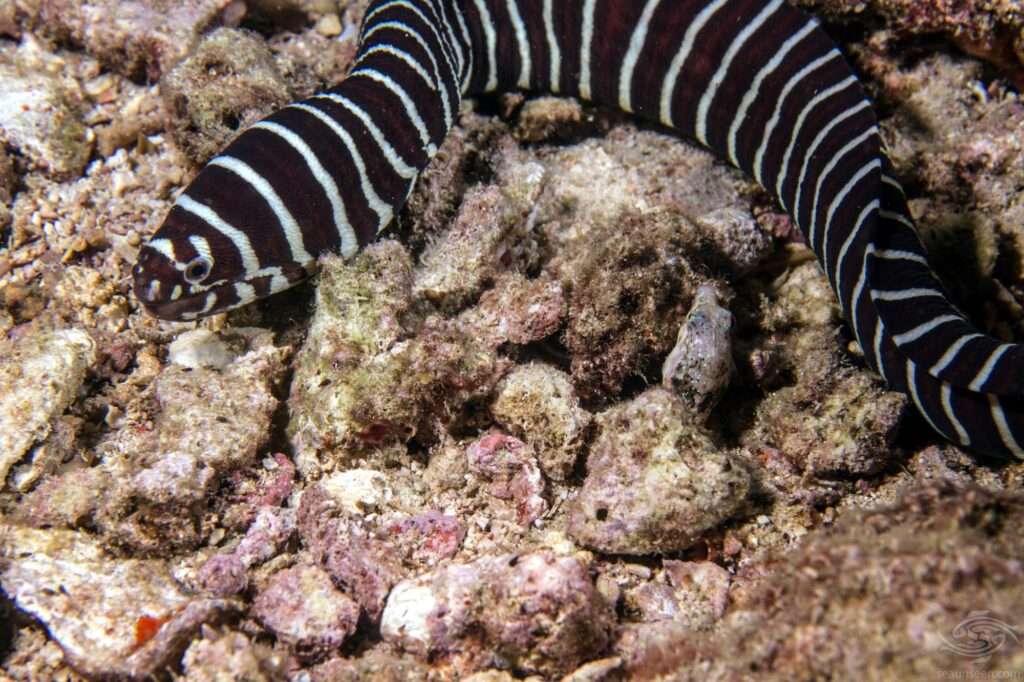
Electrifying Eel One of the fish species with organs that can generate electricity is Electrophorus electricus. A lot of fish can generate an electrical charge that they can use as “radar.” However, this species is one of the few that can generate a charge powerful enough to immobilize its prey!The Electric Eel is a real mystery. It resembles a variety of fish species in terms of traits. It might be categorized with other varieties of Unusual Fish. The Electric Eel requires breathing air, just like the Lungfish in that group, which also have elongated bodies that resemble eels. They are obligate air breathers and have a vascularized respiratory organ in their oral cavity (mouth area). They spend the majority of their time in the aquarium’s bottom, but every 10 minutes or so, they will rise to the surface to breathe. This provides them with around 80% of their oxygen.
The Electric Eel is not a true eel, despite its eel-like appearance; instead, it is more closely related to several South American knifefish. It truly belongs to the Gymnotiformes Order of electric knifefishes, which includes six families and is also known as the Neotropical or South American knifefishes. The banded knifefishes in the genus Gymnotus, which has 37 species, and the genus Electrophorus, which has just this one species—this Electric Eel—belong to the family Gymnotidae, also known as the Naked-back Knifefishes.
Traits
The Electric Eel has a cylindrical body that is long. These are big fish that may grow up to 8 feet (250 cm) long and up to 45 pounds (20 kg) in weight in the wild. They often grow smaller in captivity, only growing to a length of 4 to 5 feet (125 to 152 cm). They often live for fifteen years. Although this fish lacks a dorsal fin, it does have a very lengthy anal fin that begins close to the pectoral fin. This fin has the ability to move backwards or forwards in an oblique manner. A continuous line is created by combining the anal fin and the tiny tail fin. A big, square mouth is located at the end of the snout, and the head is flattened. It possesses scales, however they are tiny ctenoid scales, which have a serrated edge on the outside.
With an orange neck, the body is primarily a dark gray green color. They have emerald green eyes. Olive-brown juveniles have yellowish markings on them. The fact that the Electric Eel obtains about 80% of its oxygen by gulping air at the surface is one of its more unusual characteristics. In their oral cavity, they have a vascularized respiratory organ (mouth area). They often stay at the aquarium’s bottom, rising to the top every 10 to 15 minutes to get air.
These fish can produce an amazing quantity of energy, which is possibly their most intriguing characteristic. They possess a massive organ that contains hundreds of elements that can generate energy. Its body is covered in elements on more than 80% of it. They use electricity to communicate with other members of their species, to paralyze and kill their prey, and it is also speculated that they may use it to locate and select a partner.
Keeping as Pet

Habitat
Linnaeus wrote a description of the Electric Eel, Electrophorus electricus, in 1766. It is a very prevalent fish in South America and may be found in the majority of the Amazon and Orinoco basins. These fish prefer to live in low-oxygen marshes, streams, pools, and muddy, calm bodies of water. They are obligate air-breathers and will surface every ten minutes or so for air, which allows them to survive in waters with such low oxygen levels. Additionally, they are a nocturnal species that prefers densely forested environments. Despite having very weak vision, they can navigate the dark waters by subtracting about a 10 volt charge. Additionally, they employ this charge as a radar to locate prey.
Food Habits
When they are young, they eat invertebrates, but as they get older, they switch to eating fish, amphibians, birds, and small marine mammals. Since these fish are apex predators, they hardly have any competition for food. They use electric shocks to paralyze and kill their prey or, if necessary, to defend themselves from predators. They are able to generate a charge of up to 600 volts. A full-grown horse may be knocked off its feet by the force of such a shock.
Table





